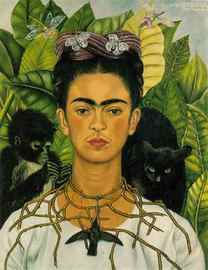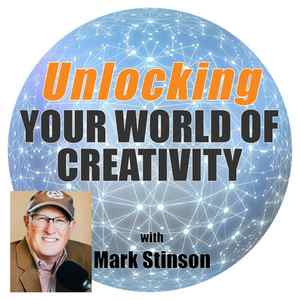That’s the dream, right?
Redbubble, A Profitable Channel For Artistic Expression
There is a growing movement of people who never want to follow a trend. Instead they embrace their own creative self-expression and are just more content with being themselves. Talented artists who design one-off pieces that will never be mass-produced are the solution for these people.
Like a cross between an art gallery and a shop for everyday products, Redbubble is an online marketplace for people that want to spruce up their life. If you’re looking for a story behind your iPhone case or duvet cover for your bed, Redbubble probably has it.
It works like this: an artist submits their design to Redbubble, customers shop from a range of products with their favorite design, Redbubble works with production facilities to make and ship the product directly to the customer.
On Redbubble, artists have the power and control they deserve. Recognizing that some artists can command higher prices, artists set their own prices and earn the entire margin above the base price that Redbubble takes. Rather than treat artists as mere suppliers, Redbubble sees them as partners. CMO Faith Sedlin said, “Crowdsourcing [designs] is a dirty word in the office.”
Since Redbubble doesn’t hold any inventory, the company is able to do mass customization on a global scale. For example, even selling one sticker with shipping is profitable. 65% of the same design on the same product has sold less than 50 times.
The business model and savvy online marketing has produced some impressive results. For the year ended 30 June 2014, Redbubble made $90 million in revenue from 1.6 million customers, 60% of which come from North America. The company expects to sell more than $135 million worth this year, since they’ve recorded just under 50% year on year growth for the last few years. They sell 44 different types of products including clothes, cases, stickers, wall art, home décor, stationary and bags but this range is constantly expanding. The company has raised $15.5M to expand to Europe.
There are 450,000 independent artists and 15 million different designs on Redbubble. So far the company has paid out $33 million to artists, something founder and CEO, Martin Hosking is very proud of. Some artists have even made $50,000 in one year from the site.
Hosking is a survivor of the first dotcom boom, having been on the founding team that listed LookSmart on the Nasdaq in 1999. With the benefit of hindsight and time to reflect, Hosking knew that his next business had to be different. Redbubble had to: really know and understand their customer; gel with a long-term strategy and have a profitable business model. Unlike the dotcom period where entrepreneurs were scrambling to raise funding and struggled to understand who their real customers were.
Selling unique designs from artists online sounds similar to Etsy, a big player in the art and craft marketplace space. However, Hosking argues that Redbubble’s model is more sustainable as it scales. One reason is that it manages fulfillment, so the customer experience of quality products, service and delivery is more consistent. With Etsy, the seller is responsible and sometimes they don’t do a good job. Another reason is that customers will always know what to expect. Etsy has come under fire for straying away from being a true marketplace for artisans and crafts people to a place for many mass-produced goods from Chinese factories.
More comparable companies are Zazzle and Society 6, although Redbubble claims the leading position. Interestingly in their early lives, Redbubble and Zazzle competed more closely when they both enabled customers to create products with their own designs. Redbubble moved away from the DIY model when it realized the founders wouldn’t really use this feature.
Creativity Comes from Humans
I could talk for an entire blog (not a single article, but a whole blog, creating new content every. single. week), about the benefit of emotional expression and release for our health overall. For example, the act of crying is cathartic — “providing psychological relief through the open expression of strong emotions; causing catharsis.” Another definition likens it to: “a purgative drug.”
Powerful, to say the least. Sheesh.
And further, “Catharsis refers to the purification and purgation of emotions — particularly pity and fear — through art or any extreme change in emotion that results in renewal and restoration.”
By definition, catharsis, or emotional release by way of crying or art, especially when that emotion is pity or fear, is renewing and restorative.
I talk to one of my girlfriends a lot about crying, mostly because we work together. And we’ve seen each other cry a lot. She says that expressing emotion has always been challenging because it feels like a waste of time.
“What does crying do for us?” she’s asked me. Especially as a self-identified “planner,” and someone who is exceptionally organized and operational, spending time doing something as seemingly foolish as crying doesn’t move the ball forward. It means stagnancy — and that means frustration.
She’s not the only one who feels this way. How many of us are not only afraid to cry because it makes us look weak, but we just don’t care to do it because we have better things to do?
Herein lies the problem: Yes, if we suppress our emotions (like the need to cry), we save time. In the short term. But what about the long term?
Without the capability and the freedom to express emotions fully and without fear of rejection, we learn how to operate robotically. We teach ourselves how to avoid feeling, so that we keep moving forward. We teach ourselves how to get the job done.
The problem is, creativity isn’t a job. And creativity doesn’t come out of robots.
(Further, on this note: I saw a Tweet the other day, I wish I remembered the originator, that read, “If you don’t enjoy your process of creating, you’re probably making a product as opposed to making art.”)
It’s a gift, an expression, a means of making the earth look more like heaven. And it comes out of living, breathing, crying, screaming, laughing, dancing, all-of-the-above-at-once humans.
Emotional Evocation, According to Mark Rothko
Mark Rothko, one of my favorite painters of all time, said this: “I’m not an abstractionist. I’m not interested in the relationship of color or form or anything else [although he was brilliant with color]. I’m interested only in expressing basic human emotions: tragedy, ecstasy, doom, and so on.”
In my life, I have cried in front of 2 paintings: The first was an Andrew Wyeth, whose use of monotonous tones to portray a small barn in the middle of a yellow, grassy field made me feel so terrifying small (in a good way) that all I knew to do was cry.
And the second was a Rothko. I don’t know why — it was a painting of 2 colors stacked one on top of another, like he’s famous for. I don’t know why I cried, but his motive worked. Through his use of color and form, I felt something that I didn’t know how to describe.
Now, these artists knew what they were doing. Rothko knew how to express tragedy, ecstasy, doom, and so on, because he knew what each of those were like to experience. He knew what color tragedy looked like, and in comparison to the color of ecstasy.
The way that artists know how to evoke emotion from their viewers is to firstly, understand that emotion more deeply and intimately than the viewer himself.
Why do you think so many artists are mad — troubled, even? And often, completely inconsolable?
An artist has to feel the depth and breadth emotion before she able to express it in color, shape, form, texture, sound, etc…
And they don’t want to be consoled. Because they know their responsibility to their craft.
Here’s What This Means for You
I sincerely hope with all my heart that you are not reading this and thinking, “Oh great. I have to be driven completely insane before I can ever begin to create.”
Not at all. Joyful is a feeling, too…as well as gratefulness, and nostalgia, and melancholy. To start.
The emotions you can portray through your work are limitless — but these examples are my favorite, only because they’re extreme and I like to be dramatic.
For you, this means letting yourself feel emotion, no matter what’s coming up. Right now, I think that a lot of us are sad. A lot of us might be concerned, fearful, and hesitant about the future. That’s okay — and that’s good. Let what’s coming up actually come up. Rather than feeling that pit of fear forming in your stomach and shoving it deeper, let it rise to the surface. Meet it face to face.
Because if you want to evoke an emotion in a viewer, you need to know what that emotion feels like, first, at its depth.
This means that, to get wildly expressive and creative, let yourself feel something. Put down the phone, turn off the TV. Silence (literally) the distractions vying for your attention, constantly. The ones that we don’t realize are numbing us.
How Art serves as a Channel for emotional release
Art possesses an incredible ability to function as a passage for emotional release. In the face of overpowering emotions or experiences, finding the appropriate words to fully articulate oneself can be a daunting task. In these moments, art steps in as a powerful medium, allowing individuals to give voice to their deepest emotions and experiences. When it comes to mental health, art is a powerful tool that brings comfort, emotional release, and a way to communicate when words are not enough.
Throughout history, numerous artists have utilized their emotions as a driving force behind their art. Frida Kahlo serves as an exemplary example, as her paintings vividly portrayed her physical and emotional anguish, alongside her Mexican heritage and feminist principles. Similarly, Vincent van Gogh expressed a profound range of emotions through his art, offering glimpses into his personal battles, moments of elation, and the depths of his innermost sentiments. Nowadays, Mandala designs are also being embraced by many as a means to release emotions. Engaging in any form of art or music that brings you into the present moment can serve as a form of meditation, facilitating the release of various emotions such as happiness, sadness, anger, and gratitude.

Whether it’s painting, drawing, dancing, writing, or any other art form, embracing art as a channel for emotional release can be a transformative and empowering journey toward self-discovery and emotional well-being.
Self-Reflection and Insight
Artistic creation encourages self-reflection and introspection, leading to greater self-awareness and insight into one’s emotions. As we engage with the artistic process, we can delve into our subconscious minds and tap into our intuition. Through self-reflection, we can develop a better understanding of our emotions, what triggers them, and the underlying factors that contribute to our mental health difficulties. By externalizing our emotions through art, we can observe and analyze our work, unveiling hidden aspects of our emotional landscape and promoting personal growth.
Art transcends the limitations of verbal language, offering a unique and powerful way to communicate. Sometimes, emotions are complex and difficult to articulate through words alone. Art provides a visual language that bypasses the need for explicit verbalization. Through strokes of a brush, lines on a canvas, or the creation of any form of art, individuals can externalize their feelings, experiences, and inner conflicts, even if they can’t quite put them into words. This non-verbal expression enables a deeper connection with emotions and facilitates their release.
Catharsis and Healing
Catharsis is a process of releasing or purging pent-up emotions, particularly through artistic or emotional expression. The accumulation of suppressed emotions can impose a significant burden on one’s mental and emotional well-being. Art gives us a way to let out our bottled-up emotions, bringing a sense of relief and release. The act of creating art serves as a safe and supportive container for these emotions, allowing us to explore and process difficult feelings such as grief, anger, or trauma. Through this process, we can experience a sense of liberation, leading to emotional healing and growth.
Engaging in the creative process can be calming and soothing, providing a healthy outlet for emotional energy. By channelling our emotions into art, we can attain a sense of mastery over our feelings. Artistic activities can help us to ground ourselves, regain emotional balance, and find a sense of inner peace. This emotional regulation not only benefits mental health but also equips us with valuable coping skills to navigate life’s challenges.





